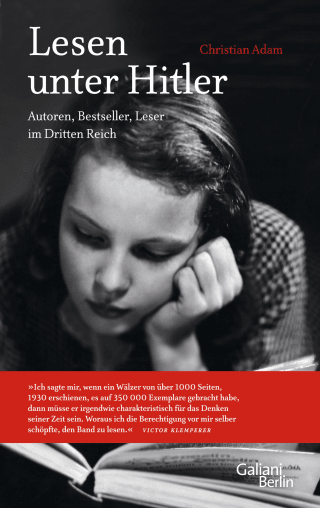It is not surprising to learn that under Hitler “Mein Kampf“ was to be found in the bookshelves of millions of German households, or that a book entitled “Darüber lache ich noch heute. Soldaten erzählen heitere Geschichten“ (I’m still laughing about it today. Soldiers tell amusing stories) sold over 2 million copies. But who could have imagined that Huxley’s “Brave New World“ was freely available during the thirties, or that “Wind, Sand and Stars“ by Antoine de Saint-Exupéry, who as a pilot was actively involved in fighting the Nazis, proved to be a great success during the war, and escaped censorship. Writers such as Lichtenberg, Rilke, Goethe and even Ernst Jünger were also widely read.
Despite the persecution of countless authors, despite the book burnings and the literary blacklists, the book industry experienced a veritable boom in war-time Germany. But what did the Germans really read? Christian Adam examines the conditions under which books were written during the Nazi dictatorship and how – in the face of opposition from the regime’s leadership – they became bestsellers, and he discusses which books were actually read. He identifies the political institutions and the key protagonists who wrestled for control of the book industry, compiles a survey of bestsellers during the darkest epoch of German history, opens up a new perspective on the mentality of the German population between 1933 and 1945 and sheds light on a forgotten chapter of German cultural history.


